CAA News Today
CAA Member Spotlight: Ryan Seslow
posted by CAA — Jul 20, 2018
Welcome to our revitalized Member News! In this ongoing series we’ll be spotlighting CAA members and learning about their work, inspirations, and thoughts on the field.
Are you interested in being featured in Member News? Let us know at: caanews@collegeart.org
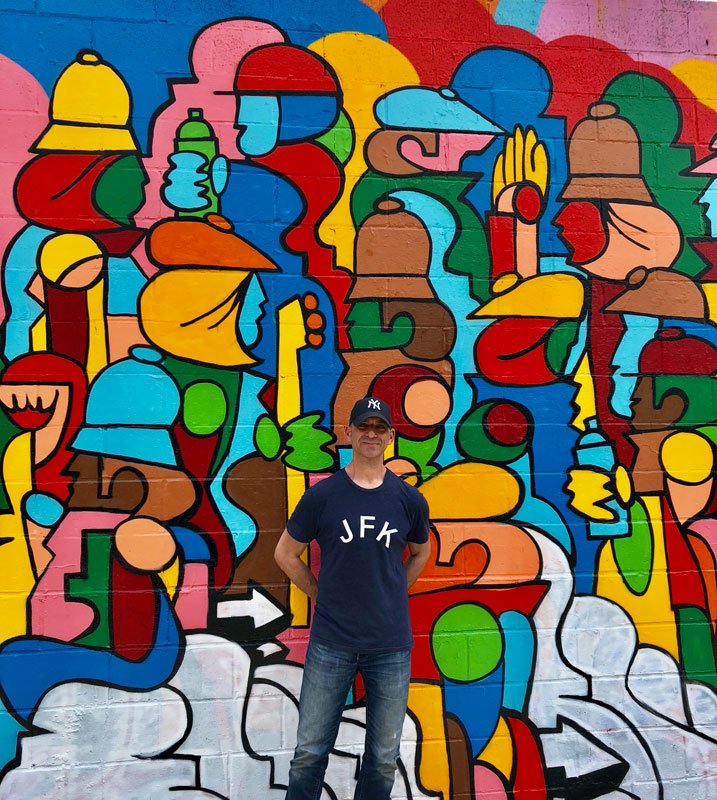
Ryan Seslow with his new mural at the Welling Court Mural Project in Astoria, NY, June 2018. All images and artwork courtesy Ryan Seslow.
CAA member Ryan Seslow is an artist, graphic designer, web designer, illustrator, and a professor of art and design living and working in New York. As a visual artist he works with a synthesis of applied arts, new media, digital and internet art, and as a professor of art and design he’s been teaching various hybrid studio art, digital art, graphic design, digital storytelling, communication technology, and web design courses for graduate and undergraduate level programs between CUNY York College, CUNY BMCC, LIU Post, and Iona College since 2004.
CAA media and content manager Joelle Te Paske corresponded recently with Ryan via email to learn more about what he’s thinking about and working on.
Joelle Te Paske: Thanks so much for taking the time to chat with me. So first things first – where are you from?
Ryan Seslow: I’m from New York, born and raised. My family migrated from Manhattan to Brooklyn and Queens, then to Long Island. My family owned a business and lived in Williamsburg for many years, then moved to Canarsie. I spent most of my childhood there and then worked for the family business for many years before college and grad school.
JTP: You’re an artist, a designer, and a professor. What drew you to the work you do?
RS: I have always been an artist. I knew it by the time I was 3 years of age because I loved to draw. I could do it for hours all by myself. By the time I was 5 years of age I was making friends in school by drawing cartoon portraits of them, it made everyone laugh. I’m also Deaf and hard of hearing, so having a visual language was the overcompensation for not hearing. I loved to learn but it was at first out of visual necessity. This became an unconventional practice and the discovery of the interconnections of all things creative. This is the short answer of course, but I have always believed in the creative human potential and how we have a responsibility to express and share it.
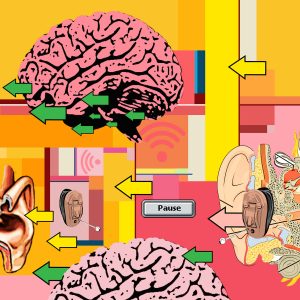 JTP: When did you first become a CAA member?
JTP: When did you first become a CAA member?
RS: CAA was always mentioned and shared by colleagues. I started teaching in 2002 as a graduate assistant in my MFA program so CAA was the go-to resource for finding information on jobs and what teaching artists were doing in the field both after their MFA studies and professionally. I joined in 2002 as a graduate student and then became a member on and off over many years now. I’m guilty of letting memberships lapse in-between but CAA has always been there to welcome me back!
I always wanted to know what other people like myself in the field were doing, how they were doing it, and why? I like to watch things from afar for a while, to understand them and experience them in my own way. This is my learning process. This always leads to ideas on how I can contribute to a larger whole. Sometimes its strangely immediate but it’s usually over time.
JTP: Have you attended CAA conferences?
RS: I haven’t, shame on me! Although I do follow the event, especially since so much of it is accessible online. Many of my teaching colleagues have attended and given presentations over the years in the various cities it takes place. I have always had the vicarious experience of hearing their stories and reading the reflection blog posts. Social media certainly helps this even more now. Perhaps 2019 is my year! Perhaps its time to create a presentation to share my last 14 1/2 years of teaching art and design at the college level from the perspective of a Deaf and Hard of Hearing professor.
JTP: What do you appreciate about being a CAA member? Where would you like to see CAA improve?
RS: I appreciate CAA’s website and the resources that are available there. I appreciate the art journals and other publications, plus the updates that CAA is currently making. I feel that I can reach out to you guys and know that I will get a response, support, and guidance. That’s huge, and I am very grateful for that.
CAA can easily expand upon their presence by collaborating with members in various capacities. I would love to curate an online exhibition on CAA’s website of art history remix GIFs. Or a “pass the buck” internet art collaboration that allows members to contribute and participate and also incorporate their students into the project. Transparency and equality, let’s emphasize this more through community. Art education and the college art education platform is in tremendous flux right now. CAA is in a great position to be a bridge between the institutions, teaching artists and professors, students and the communities they serve, and beyond.
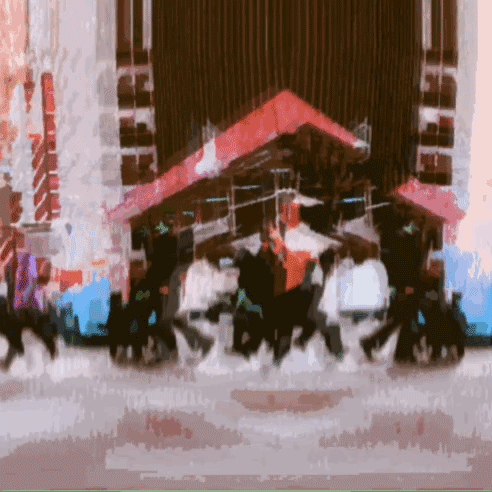
JTP: What’s exciting to you right now in academia?
RS: What excites me most in academia right now is the students, first and foremost and always the students. I love my students and I love re-emphasizing why I am a teaching artist at the college level. I’m there to help create a learning platform both inside and outside of the classroom—instilling skill sets that can be learned, displayed, and applied into the non-static world (meaning NOW, not just when they graduate). This includes public collaborative projects between my campuses and regular use of websites and the internet for dialogue, exhibition, and posterity. The internet and mobile applications make it easy to constantly be an example and share use-value-based content.
I’m excited to see how teaching artists are stepping up to the challenges of a changing academic world. Less and less full-time positions are being created and less people are majoring in various art and design programs. How does this effect both full-time professors and adjuncts? What will this lead to? I’m noticing things—many more integrated and experimental special topics courses are being created to test for interest and collaboration. Companies are partnering with colleges and universities to see “how” they can work together. Good or bad, we shall see, but either way it is a continued time of learning and taking responsibility for solving problems. This forces us to make assessments about how to respond. It is our responsibility to be of service regardless of what gets cut.
JTP: What’s not so exciting in academia?
What is not so exciting, well—the chronic complaining about how things used to be in academia. People need to move on. Chronically complaining about the past and what once was is a waste of energy. The past is the past, nothing is ever static, everything changes—art, artists, art movements, art departments and higher learning institutions. We are always in a state of change and we need to remind each other of this. It is so much easier to operate from the past because it is familiar, but we don’t grow that way.
We need to put more emphasis on the imagination and create potential to generate new solutions. We are always in a position to seek and create new solutions through collaboration and community building. This can also be created outside a single institution. Why not form new relationships and collaboratively solve problems with institutions in other countries, for instance? There is much to learn from contrast. Whether it be social, political, environmental, emotional, or psychological. We need to include and consider others in everything we do.
JTP: I love that you mention the importance of empathy and compassion for the future of education on your website. Can you speak more about that?
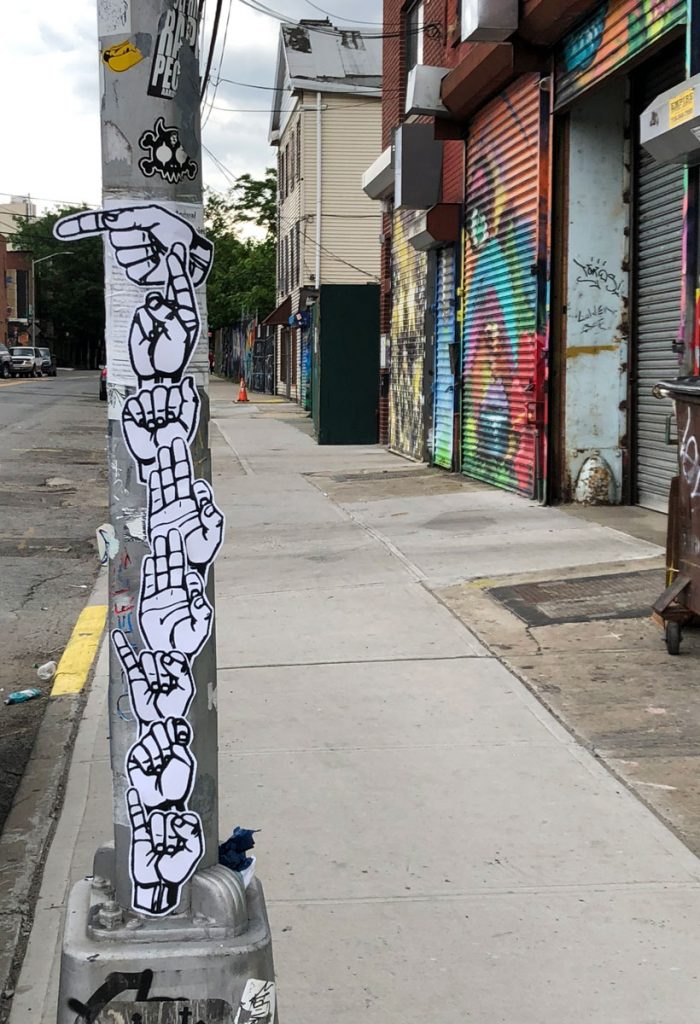
RS: I would be happy to! As I mentioned above, what excites me the most about teaching in higher education (and being a teaching artist in general) is the students. I love people. I’m interested in the psychology of learning and how that simulates itself through art, creativity, and design in a group practice.
Before any new class begins I have the highest level of respect that each student is first and foremost a beautiful human being. Professors are not better or higher than their students. We were all undergraduate students at one point. When I was in undergraduate college, I struggled as a Deaf and Hard of Hearing person attending an all-hearing university. I was afraid to ask my professors to speak louder or more slowly or clearly. Sadly, many of them were standoffish and strict with outdated rules from the 1940s (I was in college in the early 1990s). There was a lack of approachability and human rapport that I later used as the contrast—that was who I would never be. Of course, this was not all of my professors, but there were quite a few.
I set the entire tone and rapport of the 15-week semesters in the first class by meeting my students and learning about each other. The classes are not about me. Before I say one word about the course content and subject, the class meets each other as human beings, they share snippets of their lives, interests, and why they are taking the course. We talk about life, creativity, the imagination’s potential, and how to create a classroom dynamic where we are all collaborators of a whole. This has never once failed and continues to help me learn so much about myself, and the infinite number of ways that others see and experience the world.
In order to be effective teachers we must become masters of communication. This means we must master the art of listening. It’s not simply “hearing” what someone is saying, but learning how to be attuned and aware that listening goes far beyond the functions of the ears. It means being fully present with out the distractions of one’s ego making judgments and counteracting what is being said by the person speaking or communicating. As a Deaf and Hard of Hearing person working mainly in hearing persons environments it has been a very long road for me to learn how to communicate in various ways. The hearing world can learn a lot from the Deaf and Hard of Hearing community on this. I’m currently working on ways to share more about this with my colleagues, students and administrators.
JTP: That’s terrific, thank you. Could you share some of the projects you’re working on now?
RS: Ah, many, many things, here are a few:
1. I have an online exhibition running right now. I created this specifically for my website to show the potential of creating works for the internet first – then see how they can transcend into otherness. (Otherness meaning a non-commissioned public space a gallery or a museum.) I’m doing this because the internet is incredibly accessible, versatile and has so much potential for sharing of art.
This exhibition is titled: Communicating My Deaf & Hard of Hearing Self – Part 1
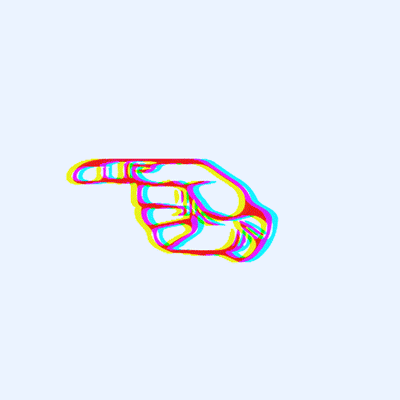
All of the pieces have been created in 2018 and consist of digital illustrations, collage, animated GIFs, video art, and written words. Fragments of manipulated grainy images and re-compositions display the variation and extension of each piece. The works are visual representations for the regular distortions, missing of sounds, words, and overall communication I experience daily. They represent how I feel, react, overcompensate, and adjust to communication in various interactions. They are intended to be both subtle, confusing and difficult to follow. Communicating My Deaf & Hard of Hearing Self – Part 1 is the first installation in the series. It is first published here on my website and shared via my social media platforms. I am seeking to extend this body of work into a lecture series for both the Deaf, Hard of Hearing and the Hearing world.
2. One of my favorite pedagogical models is a class blog. I see a lot of power and potential in it. I teach between two CUNY colleges here in New York and just submitted a wonderful cross-campus class collaboration to the New York Public Library’s zine collection. The students applied their new skill sets by interacting with each other using a class blog via the CUNY Academic Commons (where I’m a sub-committee member). You can view the entire project here.
3. I’m the curator and juror of the Art of the Hills exhibition currently on view at the Berkshire Museum in Pittsfield, MA. You can read my essay on the project here and via the Museum’s website.
4. I have a new mural at the Welling Court Mural Project in Astoria, NY. The image attached to this interview is of me and my completed mural from this past June, 2018. You can read more here.
JTP: What would you like to see more of in the field regarding resources for Deaf and Hard of Hearing professors?
RS: I would very much like CAA’s help. We could create a network and resource for connecting with more Deaf and H of H teaching artists and professors. It would be great to initiate this via this interview and build off of it.
Are you a teaching artist and/or professor who identifies as Deaf or Hard of Hearing? Let us know.
JTP: Who is your favorite artist or designer? Favorite exhibition?
RS: Ah, the hardest of all questions! I’m constantly redefining and integrating new and old favorites across all levels of influence and inspiration. I tend to like various things and discover so much retroactively through continuous research.
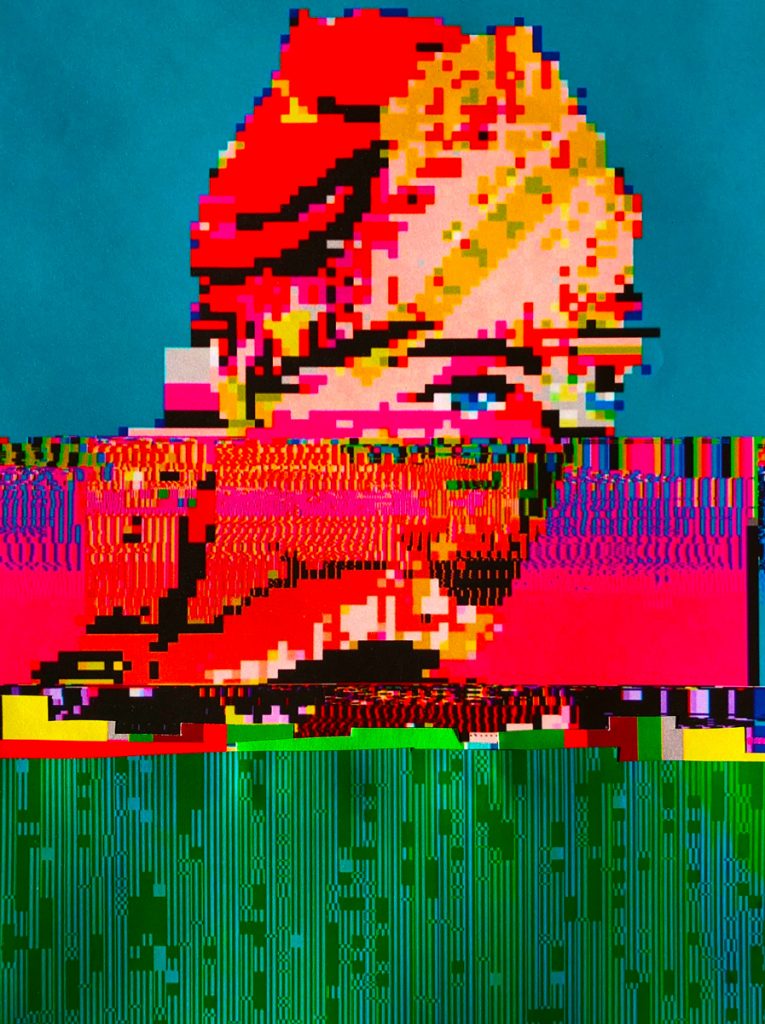
My longest running artistic influence is by far the 1980s New York City subway graffiti movement and many of the artists that pioneered it. Artists like Doze Green, Dondi White, Futura, Lady Pink, John Fekner, and Lee Quinnones are just a few to name. I got into writing graffiti in 1984 and it always stayed with me. I share the history of graffiti in every course I teach.
There is context and influence to be shared across all art and design disciplines. I also love the work of Takashi Murakami, Kara Walker, Cai Guo-Qiang, Yayoi Kusama and Matthew Barney (to name a few). Matthew Barney’s retrospective at the Guggenheim Museum in 2003 was, and still is, one of my favorite exhibitions of all time. I say this because not only did I love the variety of interconnected works in film, photography, sculpture, drawing, and installation, but the museum space itself was incredibly important and complementary to the entire exhibition. I saw the show 8 times in total.
I’m a big Paul Rand fan in the design world, as well as Joshua Davis and Debbie Millman (and her podcast Design Matters).
One of my favorite books is called Viral Art written by the multi-talented author, curator, and critic RJ Rushmore. You can download or read this book online. It’s a fantastic peek into the evolution of how graffiti and street art and their practitioners now use the internet and various web tools as a means of transcending the art form.
JTP: Thanks, Ryan! It’s great to connect with you and learn about your work. Let’s keep building resources.

This interview has been lightly edited for clarity.


